Boat Engine Troubleshooting: 7 Common Problems and How to Fix Them
Few things are more frustrating than engine problems when you're out on the water. Whether it's a failure to start at the beginning of your day or an unexpected shutdown miles from the dock, engine issues can quickly turn a pleasant outing into a stressful situation. The good news is that many common boat engine problems have relatively straightforward causes and solutions that boat owners can address themselves with basic knowledge and tools.
This comprehensive troubleshooting guide covers the seven most common boat engine problems, their likely causes, and step-by-step approaches to diagnosing and resolving them. While not every issue can be fixed on the water, understanding these common problems helps you identify when a simple fix is possible and when professional service is necessary. This knowledge can save you time, money, and the frustration of interrupted boating days.
1. Engine Won't Start
Starting issues are among the most common problems boaters face. Here's how to systematically diagnose and address them:
Symptoms
- Engine doesn't crank at all when key is turned or starter button is pressed
- Engine cranks but doesn't fire up
- Engine starts momentarily then dies
- Slow, labored cranking
Common Causes
Electrical Issues
- Dead or weak battery: Insufficient power to operate the starter
- Loose or corroded connections: Poor electrical contact at battery terminals or ground points
- Faulty ignition switch: Switch doesn't complete the circuit when activated
- Blown fuse or tripped circuit breaker: Interrupted power to starting circuit
- Defective starter motor or solenoid: Mechanical or electrical failure in starting components
Fuel System Problems
- Empty fuel tank: Insufficient or no fuel available
- Fuel shutoff valve closed: Fuel flow blocked by manual valve
- Clogged fuel filter: Restricted fuel flow to engine
- Stale or contaminated fuel: Fuel degradation during storage
- Faulty fuel pump: Insufficient fuel pressure or volume
- Carburetor issues: Flooding, clogging, or improper adjustment
Ignition System Failures
- Fouled or worn spark plugs: Unable to create proper spark
- Damaged spark plug wires: Interruption in spark delivery
- Faulty ignition coil: Insufficient voltage to spark plugs
- Defective electronic ignition components: ECU or sensor failures
Mechanical Problems
- Engine seized or hydrolocked: Internal mechanical failure or water in cylinders
- Timing issues: Improper valve or ignition timing
Diagnostic Steps
-
Check the basics first:
- Verify the engine is in neutral position
- Ensure kill switch/lanyard is properly connected
- Confirm fuel tank has adequate fuel
- Check that battery switch is in the "on" position
-
Test the battery:
- Check battery voltage with a multimeter (should read 12.6V or higher when fully charged)
- Observe instrument panel lights and gauges for signs of power
- Try operating other electrical components to verify battery condition
-
Inspect electrical connections:
- Check battery terminals for corrosion or looseness
- Verify ground connections are clean and secure
- Inspect visible wiring for damage
-
Examine fuel system components:
- Ensure fuel shutoff valve is open
- Squeeze primer bulb until firm (outboards)
- Check for fuel in the filter bowl
- Smell fuel for signs of contamination or degradation
-
Test ignition system:
- Remove and inspect spark plugs for fouling or damage
- Perform a spark test using a spark tester tool
- Check for spark when cranking the engine
Solutions
For Electrical Issues
- Clean corroded battery terminals with a wire brush and baking soda solution
- Tighten loose connections at battery and ground points
- Jump-start the engine using jumper cables and a charged battery
- Replace blown fuses or reset tripped circuit breakers
- Bypass the ignition switch if it appears faulty (temporary solution)
For Fuel System Problems
- Add fresh fuel if the tank is empty or near empty
- Open fuel shutoff valve if closed
- Replace clogged fuel filter
- For outboards, disconnect fuel line and check for flow from the tank
- Clean carburetor jets using carburetor cleaner (if accessible)
- Add fuel system treatment for water or ethanol issues
For Ignition System Failures
- Replace fouled or damaged spark plugs
- Check and replace damaged spark plug wires
- Verify ignition coil output with appropriate testing equipment
- Reset engine control module by disconnecting battery briefly (consult manual first)
For reliable starting performance, explore our starting system components and fuel system parts.
2. Engine Overheating
Overheating can cause severe engine damage if not addressed promptly. Here's how to identify and resolve cooling system issues:
Symptoms
- Temperature gauge reading high or in the red zone
- Warning alarm or light activated
- Steam from engine compartment
- Reduced engine performance
- Unusual odors (may indicate burning oil or coolant)
- No water visible at exhaust outlet (outboards and stern drives)
Common Causes
Cooling System Blockages
- Clogged raw water intake: Debris, weeds, or marine growth blocking water flow
- Restricted sea strainer: Accumulated debris in strainer basket
- Blocked cooling passages: Internal buildup of salt, minerals, or debris
- Clogged heat exchanger: Scale or debris restricting water flow
Water Pump Issues
- Worn or damaged impeller: Reduced water flow due to impeller failure
- Impeller housing wear: Excessive clearance reducing pumping efficiency
- Drive belt slippage or failure: Insufficient power to water pump
Thermostat Problems
- Stuck thermostat: Preventing proper coolant circulation
- Incorrect thermostat: Wrong temperature rating for the application
Other Causes
- Low coolant level: Insufficient coolant in closed cooling systems
- Exhaust restriction: Blockage affecting water flow through exhaust
- Incorrect engine timing: Causing higher operating temperatures
- Oil system issues: Low oil level or poor oil quality
Diagnostic Steps
-
Verify water flow:
- Check for water discharge from the exhaust or tell-tale hole (outboards)
- Observe water flow pattern – should be steady and substantial
-
Inspect raw water intake:
- Check hull intake or lower unit water pickups for blockage
- Examine sea strainer for debris (inboards and stern drives)
-
Check water pump operation:
- Inspect drive belt tension and condition if applicable
- Look for water pump leaks or signs of failure
-
Examine coolant level and condition:
- Check expansion tank level in closed cooling systems
- Inspect coolant color and clarity
Solutions
Immediate Actions When Overheating Occurs
- Reduce engine speed to idle immediately
- Monitor temperature gauge for stabilization
- If temperature continues to rise, shut down the engine
- Allow engine to cool before investigating
For Cooling System Blockages
- Clear debris from raw water intake
- Clean sea strainer basket
- Flush cooling system with appropriate cleaning solution
- Backflush if possible to dislodge blockages
For Water Pump Issues
- Replace damaged or worn impeller
- Inspect impeller housing for wear and replace if necessary
- Adjust or replace drive belts
- Check for impeller pieces lodged in cooling passages
For Thermostat Problems
- Remove and test thermostat function
- Replace with correct temperature rating thermostat
- Ensure proper installation orientation
For reliable cooling system performance, explore our cooling system components, including water pumps, thermostats, and impellers.
3. Fuel System Problems
Fuel system issues can cause a range of performance problems. Here's how to identify and address them:
Symptoms
- Engine hesitation or stumbling
- Rough idle or surging
- Poor acceleration or reduced top speed
- Excessive fuel consumption
- Difficulty starting, especially when hot
- Engine stalling under load
- Strong fuel odor
Common Causes
Fuel Quality Issues
- Stale fuel: Degraded fuel from extended storage
- Water contamination: Water in fuel from condensation or poor fueling practices
- Ethanol problems: Phase separation or ethanol-related deterioration
- Microbial growth: Bacteria or fungus in fuel tank ("diesel bug")
Fuel Delivery Problems
- Clogged fuel filter: Restricted fuel flow
- Faulty fuel pump: Insufficient pressure or volume
- Kinked or blocked fuel lines: Physical restriction of fuel flow
- Vapor lock: Fuel vaporizing in lines due to excessive heat
Carburetor/Injection Issues
- Dirty carburetor: Clogged jets or passages
- Improper carburetor adjustment: Incorrect air/fuel mixture
- Faulty fuel injectors: Clogged, leaking, or malfunctioning
- Fuel pressure regulator problems: Incorrect fuel pressure
- Air intake leaks: Unmetered air entering the system
Diagnostic Steps
-
Check fuel quality:
- Inspect fuel in tank or filter bowl for water or contamination
- Note fuel color, clarity, and odor
- Consider how long fuel has been in the tank
-
Examine fuel delivery components:
- Inspect fuel lines for kinks, cracks, or damage
- Check fuel filter for clogging or contamination
- Verify fuel pump operation (listen for pump running)
- Test fuel pressure if equipment is available
-
Inspect air intake system:
- Check air filter for cleanliness
- Look for cracks in intake hoses
- Verify throttle operation
-
Examine carburetor or injection system:
- Look for fuel leaks or seepage
- Check for visible deposits or corrosion
- Observe fuel spray pattern if visible (injectors)
Solutions
For Fuel Quality Issues
- Drain and replace contaminated fuel
- Add appropriate fuel treatment for water or ethanol issues
- Use biocide treatment for microbial growth (especially in diesel)
- Install water-separating fuel filter if not already equipped
For Fuel Delivery Problems
- Replace clogged fuel filters
- Repair or replace damaged fuel lines
- Test and replace faulty fuel pump
- Install heat shields to prevent vapor lock in hot conditions
For Carburetor/Injection Issues
- Clean carburetor with appropriate cleaner
- Adjust carburetor settings according to specifications
- Clean or replace fuel injectors
- Check and adjust fuel pressure
- Repair air intake leaks
For fuel system solutions, explore our fuel system components, including filters, lines, and treatment products.
4. Unusual Engine Noises
Strange noises often indicate developing problems. Here's how to interpret and address them:
Symptoms
- Knocking or pinging sounds
- Grinding noises
- Squealing or whining
- Clicking or tapping
- Rattling or vibration
- Popping or backfiring
Common Causes
Knocking or Pinging
- Detonation: Fuel igniting prematurely or unevenly
- Carbon buildup: Deposits in combustion chamber
- Incorrect fuel octane: Fuel not meeting engine requirements
- Advanced timing: Ignition timing set too early
- Overheating: Excessive engine temperature
Grinding Noises
- Starter engagement issues: Damaged flywheel teeth or starter drive
- Lower unit problems: Damaged gears or bearings
- Water pump failure: Impeller or housing damage
Squealing or Whining
- Belt problems: Loose, worn, or misaligned belts
- Pulley issues: Misaligned or damaged pulleys
- Bearing failures: Water pump, alternator, or other bearings
- Power steering system: Low fluid or pump problems
Clicking or Tapping
- Valve train noise: Excessive valve clearance or worn components
- Low oil pressure: Insufficient lubrication
- Piston or connecting rod issues: Wear or damage
- Electrical solenoid clicking: Starter or fuel pump attempting to engage
Rattling or Vibration
- Loose components: Engine mounts, accessories, or hardware
- Propeller issues: Damage, imbalance, or foreign object
- Exhaust system problems: Loose or damaged components
- Engine misfire: Ignition or fuel delivery problems
Diagnostic Steps
-
Characterize the noise:
- Note when the noise occurs (startup, idle, acceleration, specific RPM)
- Determine if noise changes with engine speed or load
- Identify the general location of the noise
-
For knocking/pinging:
- Check engine temperature for overheating
- Verify fuel octane rating
- Listen for changes when engine load varies
-
For grinding noises:
- If during starting, check starter engagement
- If during operation, check lower unit operation
- Shift between forward and neutral to isolate transmission noises
-
For squealing/whining:
- Inspect all belts for tension and condition
- Check pulleys for alignment and damage
- Listen with a mechanic's stethoscope to isolate bearing noises
-
For clicking/tapping:
- Check oil level and pressure
- Listen for changes with engine temperature
- Isolate top-end versus bottom-end noises
Solutions
For Knocking or Pinging
- Use higher octane fuel if recommended for your engine
- Address overheating issues
- Use carbon cleaning additives or perform decarbonization service
- Check and adjust ignition timing
- Reduce engine load until service is possible
For Grinding Noises
- Repair or replace starter drive if grinding occurs during starting
- Check and replace lower unit lubricant
- Inspect water pump and replace if damaged
- Reduce operation and seek professional service for internal grinding
For Squealing or Whining
- Adjust or replace loose or worn belts
- Align or replace damaged pulleys
- Replace failing bearings in alternator, water pump, or other components
- Check and top up power steering fluid
For Clicking or Tapping
- Check and correct oil level
- Verify oil pressure with gauge
- Adjust valve clearance if applicable
- Reduce operation and seek professional service for internal engine noises
For engine components and maintenance supplies, explore our complete parts collection organized by engine brand and system.
5. Excessive Smoke
Different types and colors of smoke indicate specific problems. Here's how to interpret and address them:
Symptoms
- White or gray smoke
- Black smoke
- Blue smoke
- Smoke at startup versus continuous smoking
- Smoke that changes with engine temperature or load
Common Causes
White/Gray Smoke
- Water in combustion chamber: Coolant leak or water intrusion
- Cold engine operation: Normal condensation during warm-up
- Head gasket failure: Coolant entering cylinders
- Cracked block or head: Internal coolant leakage
- Excessive fogging oil: Too much oil used during storage preparation
Black Smoke
- Rich fuel mixture: Too much fuel or insufficient air
- Clogged air filter: Restricted airflow
- Faulty fuel injectors: Leaking or improper spray pattern
- Incorrect carburetor adjustment: Improper air/fuel ratio
- Ignition system problems: Misfiring or incomplete combustion
Blue Smoke
- Oil burning: Oil entering combustion chamber
- Worn valve guides or seals: Oil leaking past valve train
- Worn piston rings or cylinders: Oil passing by pistons
- Overfilled crankcase: Excessive oil in engine
- Two-stroke oil issues: Incorrect oil/fuel mixture or oil quality
Diagnostic Steps
-
Identify smoke color and pattern:
- Note exact color (white/gray, black, blue)
- Observe when smoke occurs (startup, idle, acceleration, constant)
- Check if smoke changes with engine temperature
-
For white/gray smoke:
- Check if smoke dissipates after warm-up
- Inspect coolant level for unexplained loss
- Look for signs of water in oil (milky appearance)
-
For black smoke:
- Check air filter condition
- Inspect fuel system components
- Note engine performance during smoking
-
For blue smoke:
- Check oil level for overfilling
- Monitor oil consumption between checks
- For two-strokes, verify correct oil mixture ratio
Solutions
For White/Gray Smoke
- If smoke dissipates after warm-up, it may be normal condensation
- Test for head gasket failure using appropriate test kit
- Check for coolant in oil or oil in coolant
- Perform compression test to check for internal leakage
- Seek professional service for confirmed coolant leaks into cylinders
For Black Smoke
- Replace clogged air filter
- Clean or replace fuel injectors
- Adjust carburetor for proper air/fuel mixture
- Check for intake leaks or restrictions
- Verify ignition system components are functioning properly
- For diesel engines, check and service injector pump
For Blue Smoke
- Correct oil level if overfilled
- For two-strokes, adjust oil/fuel mixture to specifications
- Use higher quality oil appropriate for marine applications
- For persistent blue smoke, compression test can help diagnose ring or valve issues
- Significant internal wear may require professional service
For engine maintenance supplies, explore our maintenance kits and marine lubricants.
6. Power Loss or Poor Performance
Reduced power or performance can have multiple causes. Here's how to diagnose and address them:
Symptoms
- Reduced top speed
- Poor acceleration
- Engine bogging down under load
- Inability to reach normal RPM
- Hesitation or stumbling
- Increased fuel consumption
Common Causes
Engine-Related Issues
- Ignition problems: Worn spark plugs, faulty coils, or timing issues
- Fuel system restrictions: Clogged filters, injectors, or fuel lines
- Air intake restrictions: Dirty air filter or obstructed intake
- Exhaust restrictions: Clogged catalyst, muffler, or riser
- Compression loss: Worn rings, valves, or head gasket issues
- Overheating: Engine operating at excessive temperature
Propulsion System Problems
- Propeller damage: Bent, chipped, or fouled propeller
- Incorrect propeller: Wrong pitch, diameter, or style for the application
- Lower unit damage: Worn gears or bearings
- Transom/outdrive alignment: Improper mounting angle
- Hull fouling: Marine growth on hull increasing drag
Environmental Factors
- Excessive load: Overloaded boat or too many passengers
- Altitude effects: Reduced power at higher elevations
- Fuel quality: Poor or contaminated fuel
- Weather conditions: Strong currents, headwinds, or rough water
Diagnostic Steps
-
Characterize the performance issue:
- Note specific conditions when power loss occurs
- Determine if problem is gradual or sudden onset
- Check if issue is constant or intermittent
-
Check basic engine parameters:
- Verify engine reaches proper operating temperature
- Check for warning lights or abnormal gauge readings
- Listen for unusual noises during operation
-
Inspect propulsion components:
- Examine propeller for damage or fouling
- Check lower unit for oil leaks or damage
- Inspect hull for marine growth or damage
-
Test engine systems:
- Check spark plug condition
- Verify fuel pressure if equipment is available
- Inspect air and fuel filters
- Check exhaust system for restrictions
Solutions
For Engine-Related Issues
- Replace worn spark plugs and check ignition components
- Change clogged fuel and air filters
- Clean or replace fuel injectors
- Check and adjust ignition timing
- Perform compression test to check for internal issues
- Address any overheating problems
For Propulsion System Problems
- Repair or replace damaged propeller
- Verify correct propeller specifications for your boat and engine
- Change lower unit oil and inspect for metal particles
- Check and adjust trim angle for optimal performance
- Clean hull if marine growth is present
For Environmental Factors
- Reduce boat load to within specifications
- For high altitude operation, consider altitude-specific adjustments
- Use fresh, high-quality fuel appropriate for your engine
- Adjust expectations in challenging weather or water conditions
For performance-enhancing components, explore our drive system parts and fuel system upgrades.
7. Steering or Control Issues
Problems with steering or controls can affect safety and handling. Here's how to address them:
Symptoms
- Stiff or difficult steering
- Loose or sloppy steering
- Steering pulls to one side
- Delayed or unresponsive throttle
- Difficult or sticky shifting
- Excessive play in controls
- Unusual vibration when steering
Common Causes
Steering System Issues
- Low hydraulic fluid: Insufficient fluid in hydraulic steering systems
- Air in hydraulic lines: Reduced efficiency and responsiveness
- Cable problems: Worn, kinked, or inadequately lubricated cables
- Worn steering components: Bushings, bearings, or connection points
- Power steering failures: Pump issues or belt problems
- Misalignment: Improper engine or drive alignment
Control System Problems
- Cable issues: Throttle or shift cables damaged or improperly adjusted
- Linkage problems: Worn, loose, or misadjusted linkage components
- Corrosion: Seized or sticky pivot points
- Electronic control failures: Sensor or actuator problems
- Lower unit issues: Shift mechanism problems in the drive
Diagnostic Steps
-
For steering problems:
- Check steering fluid level in hydraulic systems
- Inspect for visible leaks in hydraulic lines or fittings
- Examine steering cables for damage or binding
- Check steering linkage connection points for wear or looseness
- Verify power steering pump operation if equipped
-
For control issues:
- Inspect throttle and shift cables for smooth operation
- Check for proper cable routing without sharp bends
- Examine linkage for loose fasteners or worn components
- Verify proper adjustment of control mechanisms
- For electronic controls, check for error codes or warning indicators
Solutions
For Steering System Issues
- Add appropriate hydraulic fluid to proper level
- Bleed air from hydraulic steering system
- Lubricate mechanical steering components
- Replace worn cables, bushings, or bearings
- Check and adjust power steering belt tension
- Verify proper engine or drive alignment
For Control System Problems
- Lubricate throttle and shift cables
- Adjust cable tension according to specifications
- Replace damaged or worn cables
- Tighten loose fasteners in linkage
- Clean and lubricate pivot points
- For electronic controls, consult diagnostic procedures for your specific system
For steering and control components, explore our control system parts collection.
Preventive Maintenance to Avoid Common Problems
Many engine problems can be prevented with regular maintenance:
Regular Service Items
- Fluid changes: Engine oil, gear oil, and coolant at recommended intervals
- Filter replacement: Oil, fuel, and air filters according to schedule
- Spark plug service: Inspection and replacement based on hours or condition
- Impeller replacement: Typically annually or every 100-200 hours
- Zinc anode inspection: Check and replace when 50% deteriorated
- Belt inspection: Check tension and condition regularly
Seasonal Maintenance
- Spring commissioning: Thorough inspection and preparation for the season
- Mid-season check: Quick inspection of critical systems during peak use
- Winterization: Proper storage preparation to prevent off-season damage
- Corrosion prevention: Application of appropriate protectants
Operational Best Practices
- Proper warm-up: Allow engine to reach operating temperature before high load
- Appropriate shutdown: Idle period before shutting down, especially for turbocharged engines
- Fuel management: Use fresh fuel with appropriate additives
- Regular flushing: Freshwater flush after saltwater use
- Proper storage: Cover engine when not in use for extended periods
For comprehensive maintenance supplies, explore our maintenance kits designed for specific engine models and service intervals.
When to Seek Professional Help
While many issues can be addressed by boat owners, some situations warrant professional assistance:
Situations Requiring Professional Service
- Internal engine noises (knocking, severe tapping)
- Significant loss of compression
- Major overheating events
- Electrical system failures beyond basic troubleshooting
- Water intrusion into engine cylinders
- Transmission or lower unit internal failures
- Electronic control system malfunctions
- Any issue where disassembly of major components is required
Preparing for Professional Service
- Document symptoms thoroughly (when, how, under what conditions)
- Note any troubleshooting steps already attempted
- Record error codes or warning messages
- Take photos or videos of the issue when possible
- Bring service records and maintenance history
Emergency Situations
- Significant water intrusion or sinking risk
- Fire or risk of fire
- Loss of steering control
- Fuel leaks or strong fuel odors
- Electrical system shorting or sparking
In these situations, focus on safety first. Shut down the engine if possible, deploy appropriate safety equipment, and contact emergency services if necessary.
Conclusion
Understanding how to diagnose and address common boat engine problems empowers you to handle many issues that arise on the water. While this guide covers the most frequent problems boaters encounter, remember that prevention through regular maintenance is always the best approach. By following recommended service intervals and addressing small issues before they become major problems, you'll enjoy more reliable performance and fewer interrupted boating days.
Keep basic tools and spare parts onboard for common issues, but also know your limits. Some problems require professional expertise and specialized equipment to resolve properly. When in doubt, consult with a qualified marine technician to prevent inadvertent damage or safety risks.
With proper care and attention, your marine engine can provide years of reliable service and enjoyable time on the water. The investment in regular maintenance and prompt attention to developing issues will pay dividends in reduced repair costs and increased reliability when you need it most.
For all your marine engine maintenance and repair needs, explore our complete range of components for Yamaha, Mercury, Volvo Penta, and other major brands. Our high-quality parts are designed specifically for the demanding marine environment, ensuring optimal performance in all conditions.


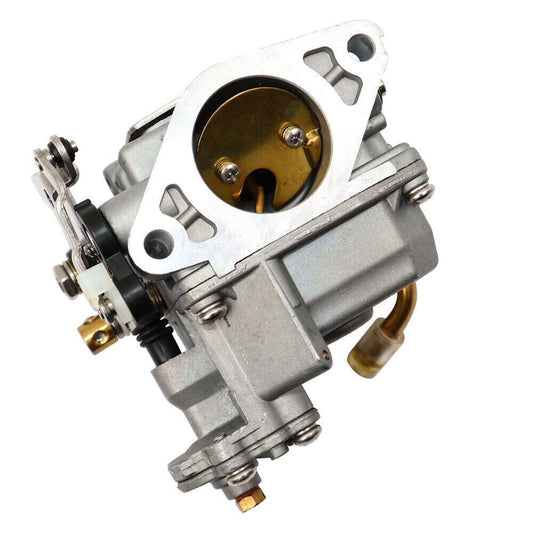
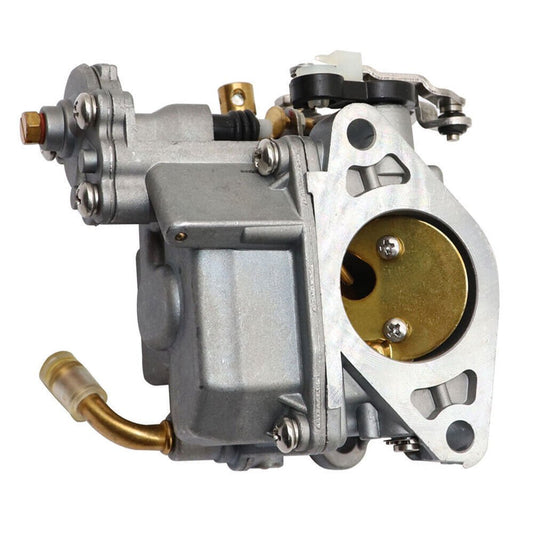
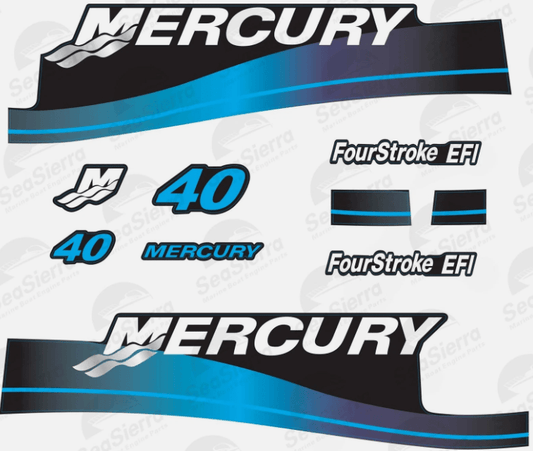

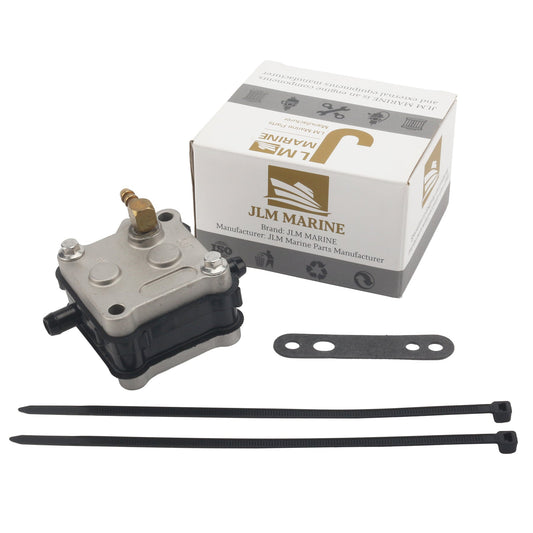
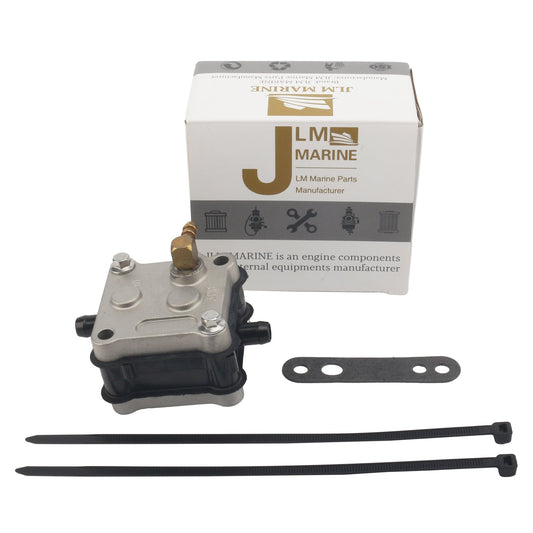
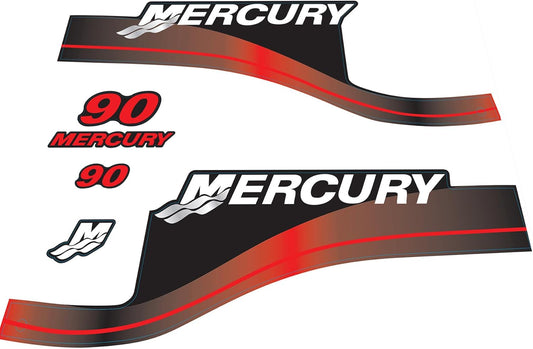
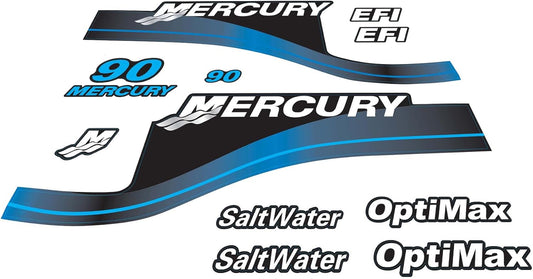
Leave a comment
Please note, comments need to be approved before they are published.